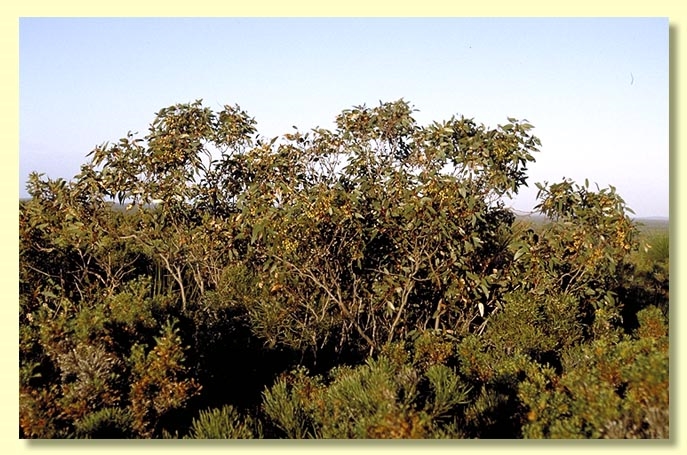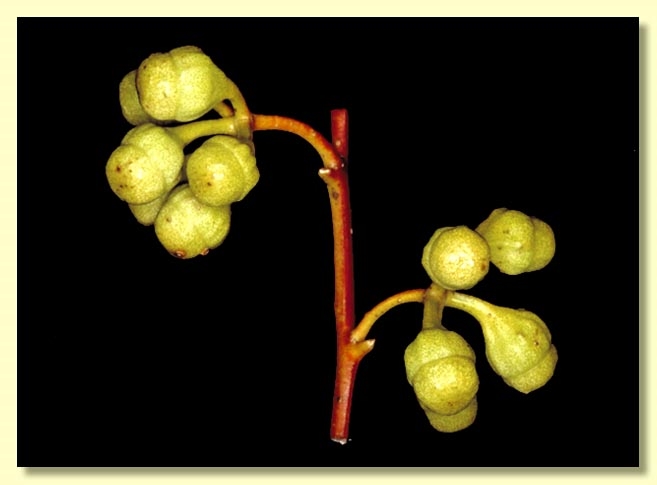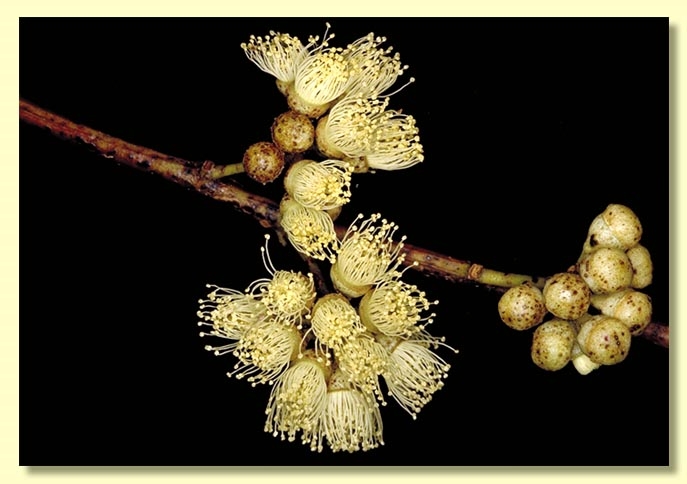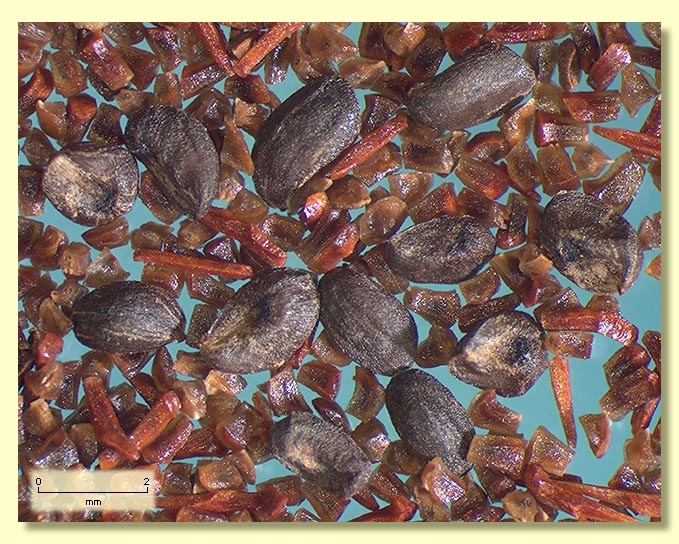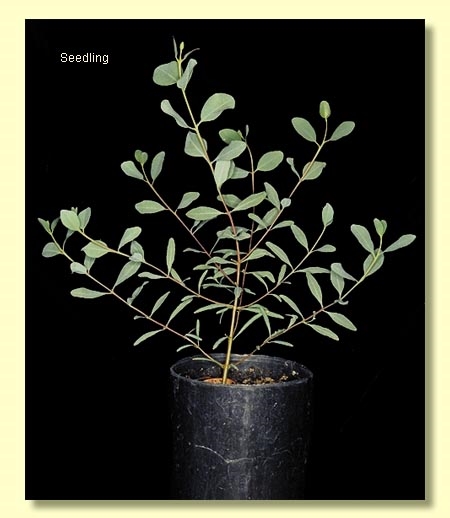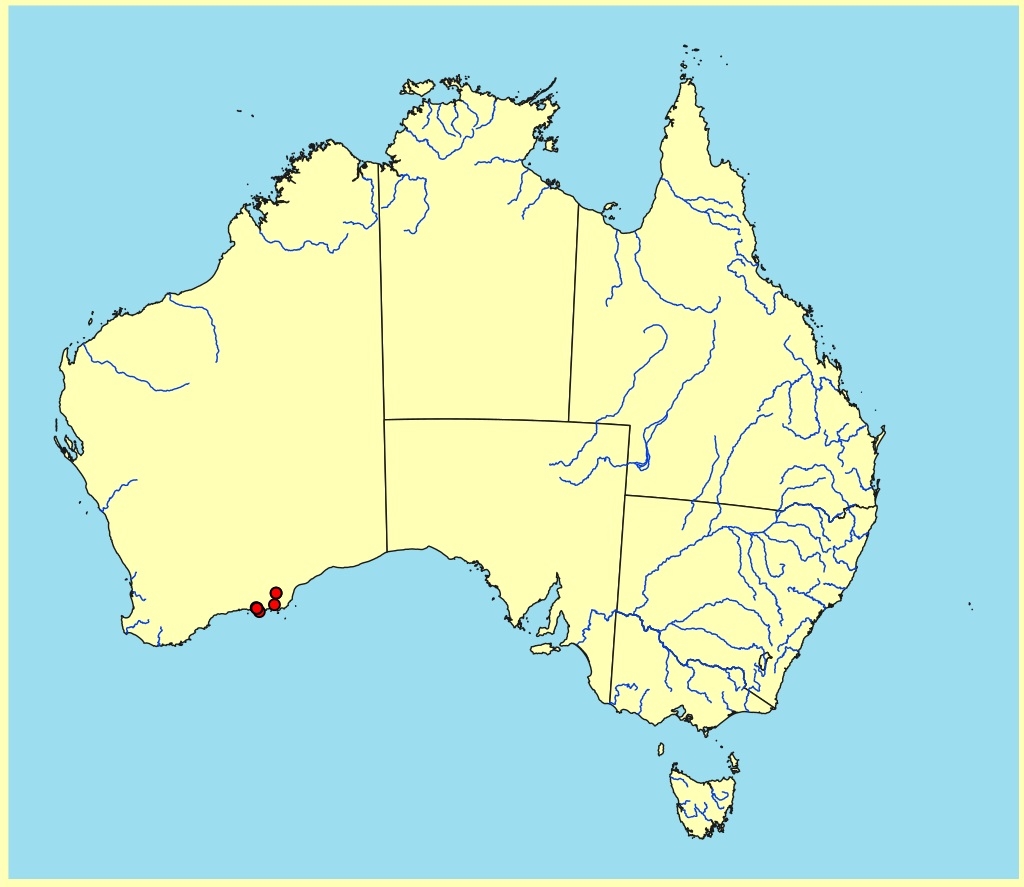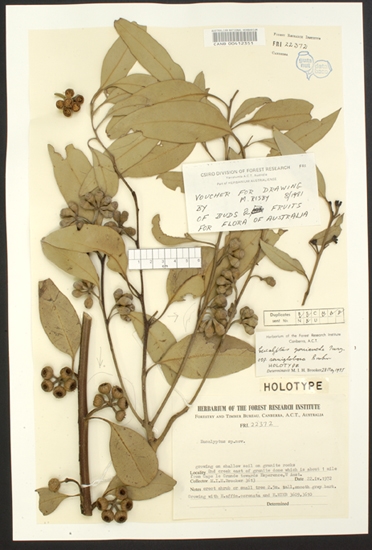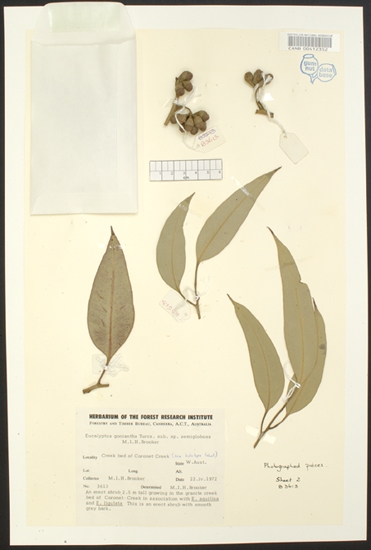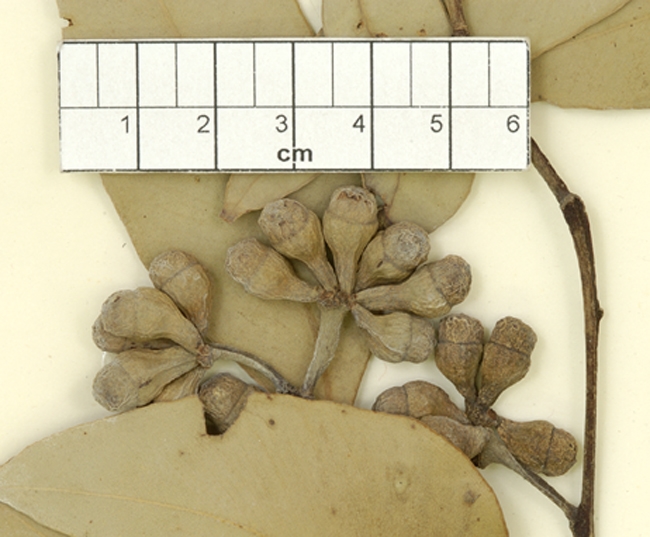Eucalyptus | Symphyomyrtus | Bisectae | Destitutae | Falcatae | Rugatae
Euclid - Online edition
Eucalyptus semiglobosa
Bark smooth throughout, pale grey to dark grey.
Branchlets more or less square; lacking oil glands in the pith.
Juvenile growth (coppice or field seedlings to 50 cm): stems square in cross-section; juvenile leaves always petiolate, sub-opposite to alternate, elliptical to oblong or ovate, 2–10.5 cm long, 1–6 cm wide, grey-green.
Adult leaves alternate, petioles 1.3–2.5 cm long; blade lanceolate, 7.5–15 cm long, 1.7–3.8 cm wide, base tapering to petiole, margin entire, apex acute, concolorous, dull to slightly glossy, green, side-veins at an acute or wider angle to midrib, reticulation very dense, intramarginal vein fairly close to margin, oil glands numerous, irregular, intersectional.
Inflorescence axillary unbranched, spreading to pendulous, peduncles rounded to narrowly flattened, 1–2.5 cm long, buds 7, 9 or 11 (?or more) per umbel, pedicellate (pedicels 0.3–0.7 cm long). Mature buds ovoid but narrowed at the join, 0.8–1.1 cm long, 0.6–0.8 cm wide, smooth to slightly ribbed, creamy white, scar present (outer operculum shed early), operculum rounded to bluntly conical, stamens inflexed, anthers cuboid, versatile, sub-basifixed, dehiscing by longitudinal slits, style long and straight, stigma blunt to slightly rounded, locules 4 or 5, the placentae each with 4 vertical rows of ovules. Flowers creamy white.
Fruit down-turned, pedicellate (pedicels 0.2–0.7 cm long), truncate-globose to hemispherical, ribbed or wrinkled, 0.8–1 cm long, 1–1.4 cm wide, rim thick, disc usually descending, valves 4 or 5, exserted but fragile.
Seeds grey-brown, 1–2.5 mm long, ovoid or flattened-ovoid, dorsal surface very shallowly reticulate, hilum ventral.
Cultivated seedling: cotyledons Y-shaped (bisected); stems rounded in cross-section; leaves initially linear and sessile or shortly petiolate for ca 7 nodes, then petiolate, broadly elliptical or less commonly ovate, alternate at node 9 to 15+ or remaining subopposite for many nodes, 2–5 cm long, 0.5–3 cm wide, base tapering, apex rounded, dull, green to greyish green.
Flowering has been recorded in June, October, November and December.
A mallee species endemic to southern coastal Western Australia, of discontinuous distribution from Esperance east to Point Malcolm on shallow moist sandy sites at the base of massive granite inselbergs. The bark is smooth and the adult leaves glossy green, buds are smooth (or never more than weakly ribbed) with rounded to bluntly conical operculum and occur in pendulous umbels of 7, 9 or 11 (?or more).
In his classification of the eucalypts Brooker (2000) placed Eucalyptus semiglobosa (as a subspecies of E. goniantha ) in Eucalyptus subgenus Symphyomyrtus section Bisectae subsection Destitutae because buds have two opercula, cotyledons are Y-shaped and branchlets lack oil glands in the pith. Within this subsection E. semiglobosa belongs to a group of mallet and mallee species characterised by often pendulous inflorescences with usually pedicellate ovoid buds with a conical to beaked operculum, flattened-globose fruits with exserted fragile valves and adult leaves that are green, densely reticulate and have numerous intersectional oil glands and smooth bark. The species are the mallets E. falcata, E. ornata, E. purpurata, E. recta, E. rugulata and E. annettae; and the mallees E. dorrienii, E. petrensis, E. ecostata and the newly described E. opimiflora, plus the coastal and sub-coastal mallees E. goniantha (with two subspecies), E. kessellii (with two subspecies), E. notactites and E. semiglobosa. These mallets and mallees together form series Falcatae subseries Rugatae, albeit in a form somewhat modified from Brooker's classification.
E. semiglobosa is unlikely to be confused with other mallee species in series Rugatae because of it smooth or virtually smooth buds with short rounded to bluntly conical operculum. and buds and fruits which are held in umbels on slender down-turned peduncles. Other mallees in the subseries Rugatae that have slender pendulous to spreading peduncles have opercula conical to beaked to elongated. The mallees E. goniantha, E. notactites and E. kessellii all have strap like peduncles.
The mallet species in subseries Rugatae, viz. E. argyphea, E. purpurata, E. rugulata, E. recta and E. ornata, are all trees lacking a lignotuber and occur in the wheatbelt or nearby, and are easily distinguished from E. semiglobosa by habitat, growth habit and the tapering conical opercula. The newly described mallet from near Israelite Bay, E. annettae, has squared often glaucous branchlets and has prominently ribbed buds and fruit.

